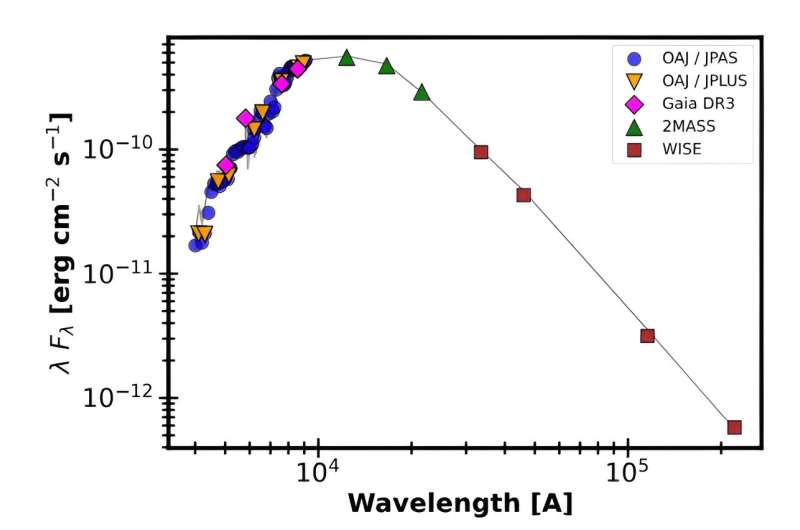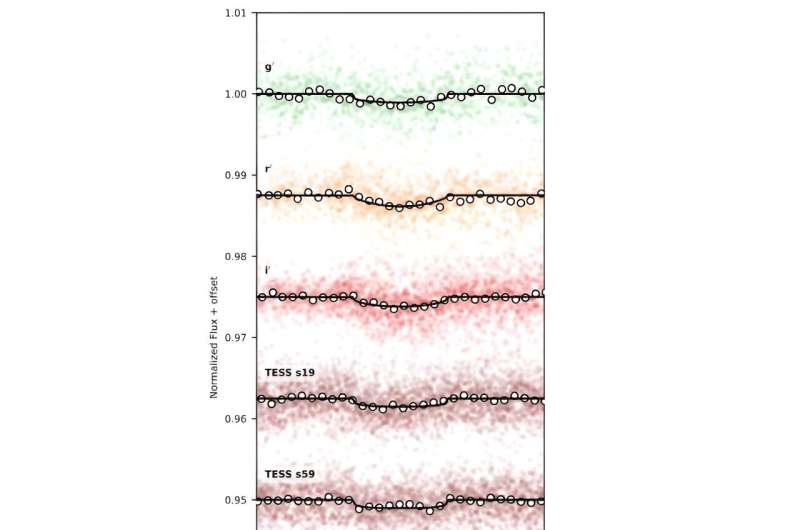June 3, 2024 report
TOI-1685 b is a hot and rocky super-Earth exoplanet, observations find

Tomasz Nowakowski
astronomy writer

An international team of astronomers has performed follow-up observations of a nearby alien world known as TOI-1685 b. , published May 21 on the pre-print server arXiv, indicate that TOI-1685 b is a hot and rocky alien world with an Earth-like density.
The so-called "super-Earths" are planets more massive than Earth but not exceeding the mass of Neptune. Although the term "super-Earth" refers only to the mass of the planet, it is also used by astronomers to describe planets bigger than Earth but smaller than the so-called "mini-Neptunes" (with a radius between two to four Earth radii).
Discovered in 2021, TOI-1685 b is an ultra-short-period (USP) super-Earth orbiting an M-dwarf star about half the size and mass of the sun. The system is located some 122.5 light years away.
Previous observations have found that TOI-1685 b orbits its host every 16.5 hours; however, the physical properties of this planet remain uncertain. Some studies have reported that TOI-1685 b is a water world (with a water fraction of around 50%) about 70% larger than the Earth, while others have suggested that it is a rocky planet with a radius of around 1.46 Earth radii, devoid of any significant water.
To resolve these discrepancies in the data, a group of astronomers led by Jennifer A. Burt of the California Institute of Technology (Caltech) decided to revisit TOI-1685 b using NASA's Transiting Exoplanet Survey Satellite (TESS) and various ground-based observing facilities.

"Here we include a refined stellar classification with a focus on addressing the host star's metallicity, an updated planet radius measurement that includes two sectors of TESS data and multi-color photometry from a variety of ground-based facilities, and a more accurate dynamical mass measurement from a combined CARMENES, IRD, and MAROON-X radial velocity data set," the researchers explained.
New observations found that TOI-1685 b has a radius of approximately 1.47 Earth radii and is about three times more massive than the Earth, which yields a density at a level of 5.3 g/cm3. Therefore, it means that the density of TOI-1685 b is just 4% less than the Earth's bulk density.
The astronomers underline that the similarity to Earth's density suggests that TOI-1685 b is also a rocky planet with minimal volume contributions from any hydrogen or helium atmosphere components. Moreover, TOI-1685 b was found to have a high equilibrium temperature—about 1,062 K.
Summing up the results, the authors of the paper note that although they exclude the possibility that TOI-1685 b may be a water world, it could still have a high mean-molecular weight atmosphere.
Written for you by our author —this article is the result of careful human work. We rely on readers like you to keep independent science journalism alive. If this reporting matters to you, please consider a (especially monthly). You'll get an ad-free account as a thank-you.
More information: Jennifer A. Burt et al, TOI-1685 b is a Hot Rocky Super-Earth: Updates to the Stellar and Planet Parameters of a Popular JWST Cycle 2 Target, arXiv (2024).
Journal information: arXiv
© 2024 Science X Network




















